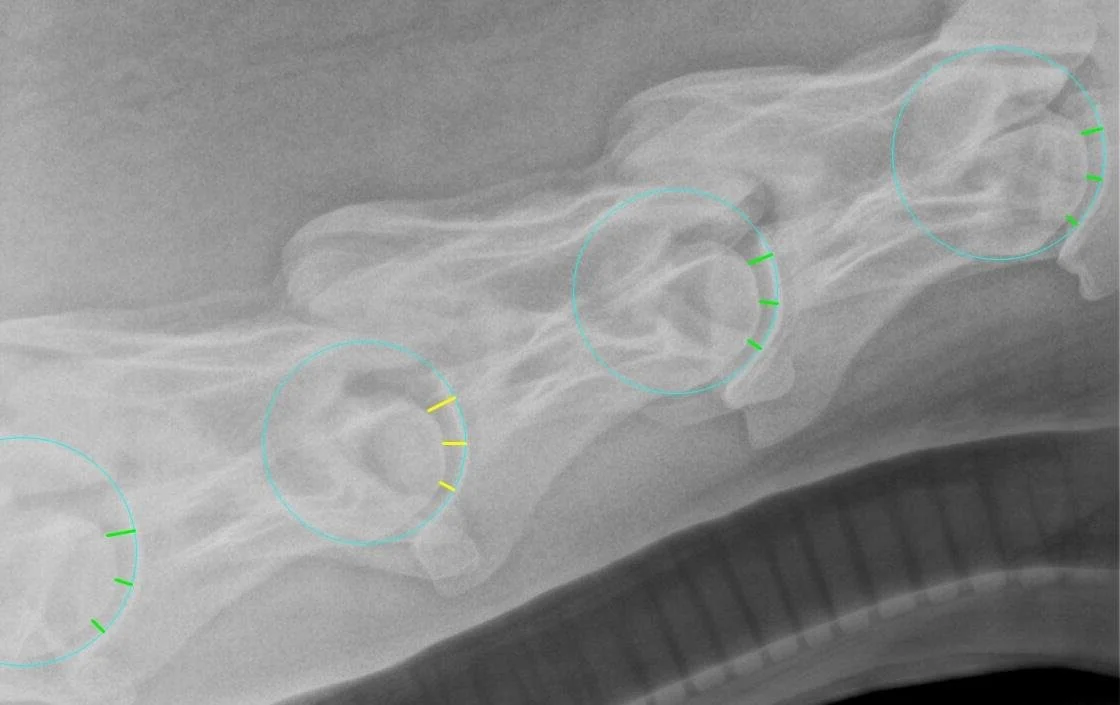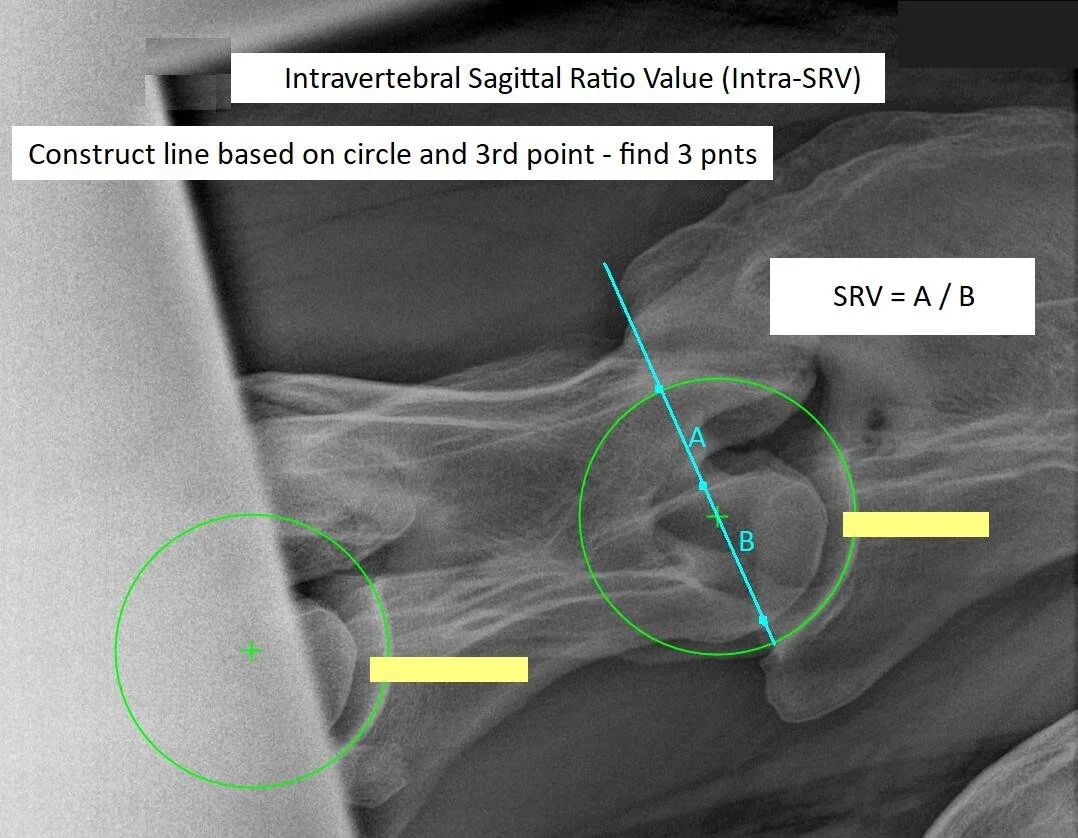Some Notes on our Equine Lateral Neck Report
Our currently released equine neck tool is the first version of this tool. We are already at work on the next version which will contain additional measurements. In the current version we compute a measure of the apparent thickness of the cervical vertebral disc by computing a measure of the gap between adjacent cervical vertebrae.
Our “Equine Cervical Gap Metric” is loosely based (or inspired by) the publication with clickable link in our report, namely, Veraa et al. But we compute the measure a bit differently. We fit a circle to the proximal joint surface of each visible vertebral body and measure the length of the joint space along 3 radial lines from the center of the fit circle. We then express the size of the joint space (or “gap”) as the ratio of this gap length over the radius of the circle, formulated as a percentage.
In reviewing thousands of images, it was decided to ignore the top-most gap measure, as the shape of the condyle is variable there, and so at present we use only the lower two gap measures - we average them to result in our “cervical gap metric” - a single number for each joint.
Example: Green gaps are in the “normal” range, Yellow GAPS are Larger than normal, and red gaps are smaller than normal. The histogram below is for these 4 joints.
In the image above, you see the circles that are fit to the geometry of the vertebral bodies and the gaps measured along the radial direction from the center of the circle. Currently we ignore the upper gap, and average the lower two as a percentage of the radius of the circle to compute the cervical gap metric.
The generated report includes a histogram diagram similar to the above. This shows the distribution of the cervical gap metric for over 5,000 cervical joints in our reference population (mixed breed, mixed ages). A vertical black line denotes the measure for each of the joints visible in the image. Our system does not currently recognize which vertebrae (e.g. C2, C3, C4) are present in the image. We have colored the lower 10th percentile red, and the above 90th percentile yellow. Measures in the green zone might be considered “normal” — and measures that are ‘too small’ (red zone) or ‘too large’ (yellow zone) might indicate that additional diagnostics may be appropriate.
Radiographs are not usually sufficient for a definitive diagnosis of certain cervical issues, but our report can be used as a screener to provide rationale for proceeding to MRI or CT.
Usage
Please use well-taken lateral radiographs of the neck. When possible, you may wish to take several radiographs and score them all with our system to look for uniformity of results to increase your confidence. Please review the work done by our AI system and make small corrections in the gap measures if you feel it is needed. Our system is not diagnosing - it is to be used as a screening tool to indicate if follow-on diagnostics test may be appropriate.
Future
We are in the process of automating additional measures of the equine neck. The image below shows our next target: automatic calculation of the intervertebral sagittal ratio value (Intra-SRV) as discussed in the reference Rush et al. Our computation of this value will proceed as indicated in the image below:
We seek university partners who may wish to investigate the clinical relevance of our measures. We would like to perform studies on how the measurement statistics may change with age, breed, neck position during radiography, etc.



